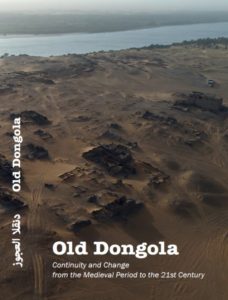Warsaw 2021
ISBN: 978-83-953362-3-2 (print)
ISBN: 978-83-953362-4-9 (online)
Pages: 164
Soft coverFunding: The DIALOG project, ‘ArchaeoCDN. Archaeological Centre of Scientific Excellence’, Ministry of Education and Science of the Republic of Poland, Qatar-Sudan Archaeological Project (QSAP), European Research Council (ERC).
This book is special in that it is the PCMA’s first venture into the field of collaborative archaeology. It was conceived to respond to the desire of local communities to learn more about the history of the landscape they have lived in and to the development of which they have contributed.
Old Dongola has been excavated and conserved by Polish expedition for more than 60 years. The new project—Old Dongola: Development, Heritage, Archaeology, initiated in 2019—has extended the research scope to the post-medieval Islamic period and the living heritage in the region, integrating active engagement and collaboration with local communities as well as sustainable development. Old Dongola is a continuously evolving heritage landscape, and this book, published bilingually in English and Arabic, is aimed to raise awareness of its importance among both the Sudanese and the international audience.
This brief introduction to the history of the urban site starts with the founding of the city as the capital of the medieval Nubian Kingdom of Makuria in the 6th century AD and continues through the present day, showing how the heritage landscape of today was shaped by cultural, economic, social and spiritual activities over the centuries. The Christian heritage that has been uncovered and conserved by Polish teams since 1964 is magnificent, yet the history of the city did not end with the collapse of the Makurian Kingdom. Old Dongola remained an important regional centre and the hub of Islamic teaching, and is the ancestral home of local residents living in the surrounding villages. Hence the strong ties that link the site to today’s local communities. Therefore, bringing together the results of archaeological research and the knowledge and practice of local communities has been crucial in the making of this book.
For download (PDF files):
Full Text (PDF)Chapters in English:
- 1. Title pages (598 KB)
- 2. Acknowledgments (127 KB)
- 3. Introduction (473 KB)
- 4. Old Dongola today (2728 KB)
- 5. The history of Old Dongola (2018 KB)
- 6. Investigating Old Dongola (2790 KB)
- 7. Working together for the heritage at Old Dongola (2790 KB)
- 8. Respecting the heritage place during your visit (196 KB)
- 9. Further reading and online resources (481 KB)
Chapters in Arabic:
- 1. صفحة عنوان الكتاب (572 KB)
- 2. شكر وتقدير (48 KB)
- 3. مــقـدمــــة (343 KB)
- 4. دنقلا العجوز اليوم (2036 KB)
- 5. تاريخ دنقلا العجوز (1871 KB)
- 6. دراسة دنقلا العجوز (670 KB)
- 7. العمل معاً من أجل تراث دنقلا العجوز (1013 KB)
- 8. احترام المكان التراثي أثناء زيارتك (149 KB)
- 9. قراءات إضافية ومصادر عبر الإنترنت (493 KB)






No comments:
Post a Comment